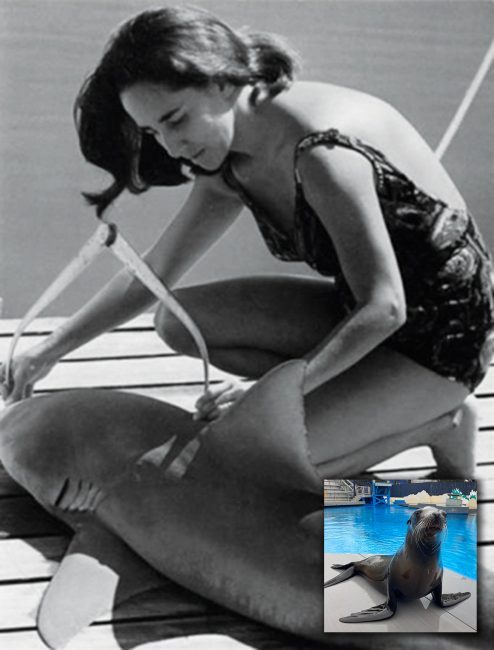
March 10, 2022
Eugenie Clark: The Shark Lady
- as seen by -
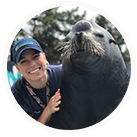 Stephanie Graehling
Stephanie Graehling
Clark is one of our California sea lions (Zalophus californianus) that participates in the Sea Lion Celebration shows at WCS’s New York Aquarium Aquatheater. He joined WCS in the summer of 2015 as a rescue when he was about a year old. He stranded twice in California and, despite rehabilitation efforts, was unable to survive on his own. When he arrived at the aquarium, Clark (inset, above) was named in honor of a groundbreaking marine conservationist, Dr. Eugenie Clark (above, measuring a shark at Cape Haze Marine Lab in mid-1900s.)
Eugenie “Genie” Clark (1922-2015) was born in New York City. She was interested in the water and the life within from a very early age. As a child, Clark would regularly visit the New York Aquarium at its original location at Battery Park in lower Manhattan while her mother was at work. She was inspired to learn more about marine life from those visits.
After receiving a degree in ichthyology from Hunter College, and later a doctorate from New York University, Clark was a pioneer for women working in the field of marine biology, which at the time, employed mostly men. She participated in many research projects focused on live-bearing fish and explored the largely uncharted waters of the Middle East’s Red Sea. Clark challenged stereotypes about women in science and became a tireless champion dedicated to changing the public’s erroneous perception of sharks. As her career advanced, she was nicknamed “The Shark Lady”.
Throughout her life, Clark was very involved in research and collaboration at several organizations including the Scripps Institution of Oceanography, the New York Zoological Society (now the Wildlife Conservation Society), Woods Hole Oceanographic Institution, and the American Museum of Natural History. In 1955, Clark founded what is now the Mote Marine Laboratory in southwest Florida. She received many accolades and awards for her work in marine conservation. She published three books and over 160 scientific papers and articles. Clark was the first to begin a training program with sharks. Working with lemon sharks as well as other species, she taught them to push a target to receive reinforcement. This work helped change the notion that sharks lacked intelligence.
Clark later became a professor of marine biology at the University of Maryland until her retirement. Even after retiring, Clark remained active in the field of shark research and conservation. Clark returned to Mote Marine Laboratory as Senior Scientist, Director Emerita, and trustee until her death in 2015.
Dr. Eugenie Clark had a massive impact on what we now know about aquatic species and our role in the world with them. Her legacy has inspired young people to learn about our world’s habitats and the conservation of irreplaceable species. Much of what modern aquariums and conservationists know today would not have been possible without Clark’s expansive work throughout her life.
Clark’s brilliance and perseverance broke barriers for women in the field of science. Her courage to wade into an almost exclusively male-dominated field is partly why I am working with magnificent animals like Clark the sea lion and a testament to the power of a visit to the New York Aquarium.
EDITOR’S NOTE: To celebrate Women’s History Month, Wild View is featuring posts by and about women and their contributions to science and conservation throughout March. Research sources for this post include mote.org, noaa.gov, Smithsonian, and britannica.com.
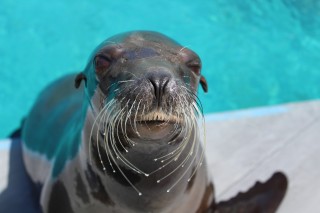
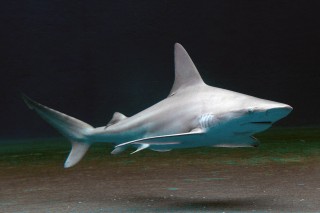
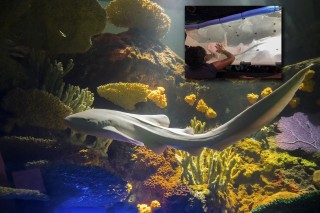
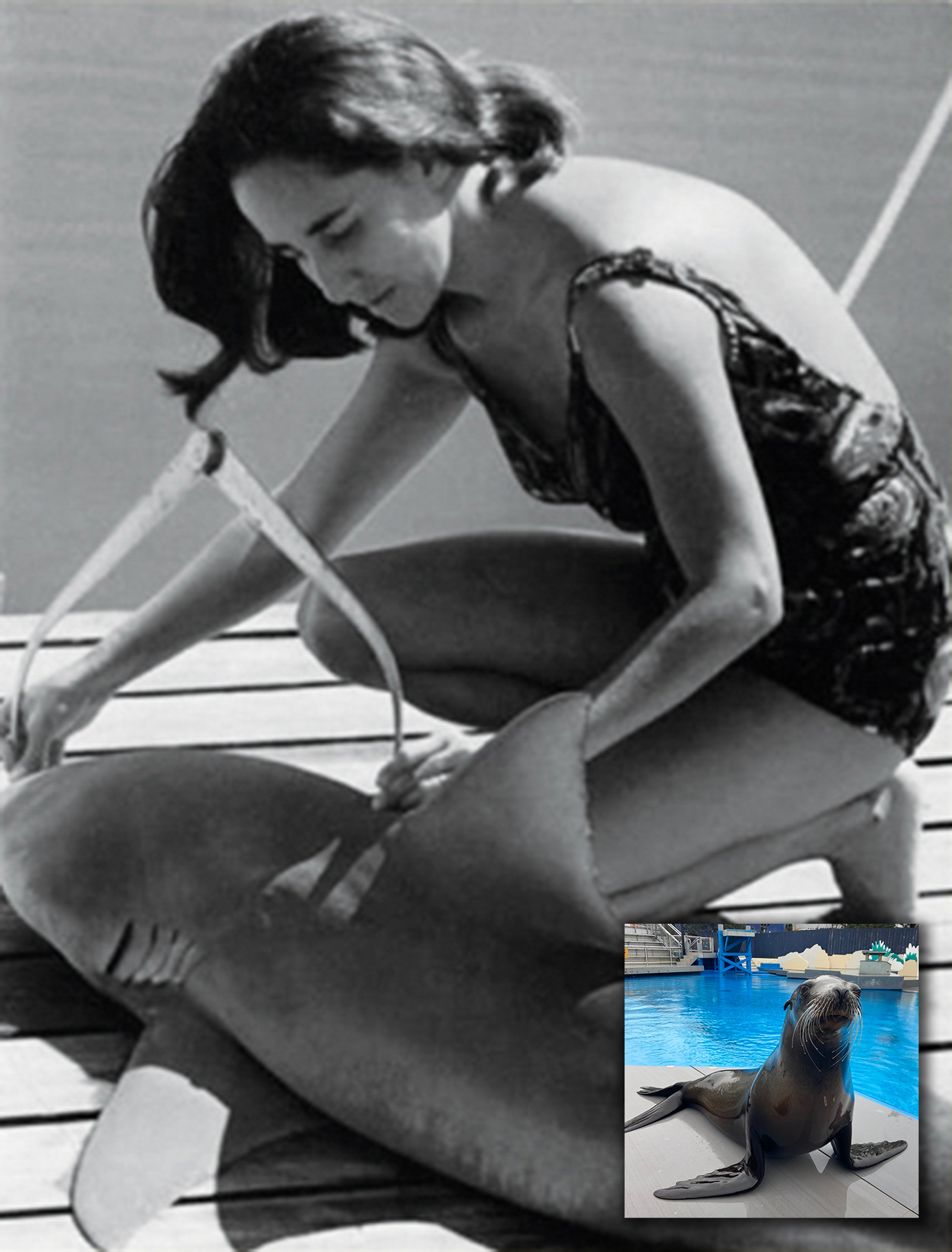
Leave a Comment
Paul L. Sieswerda
March 11, 2022 at 4:49 pm
Nice article about a classy lady.
Ahmarie Mims
September 7, 2022 at 2:54 pm
she is brave for what she did cause if I was in her shoes I would not do what she did and what ever she did is still going on in the present and in the future